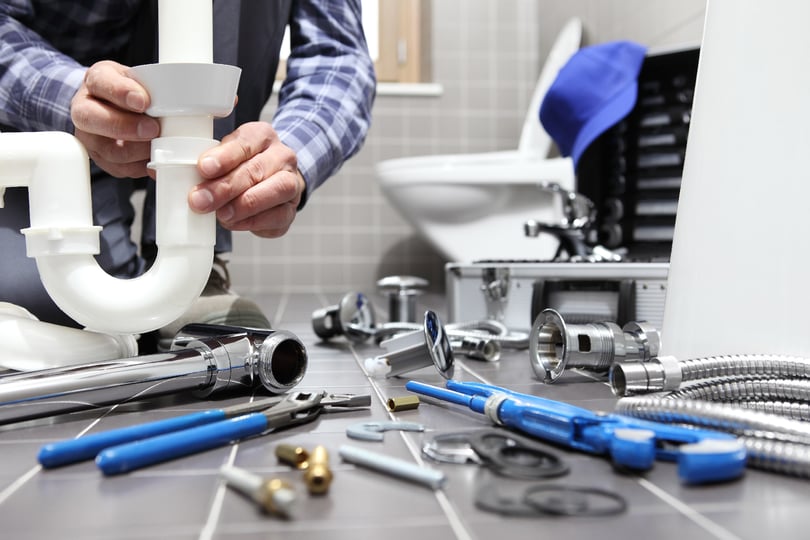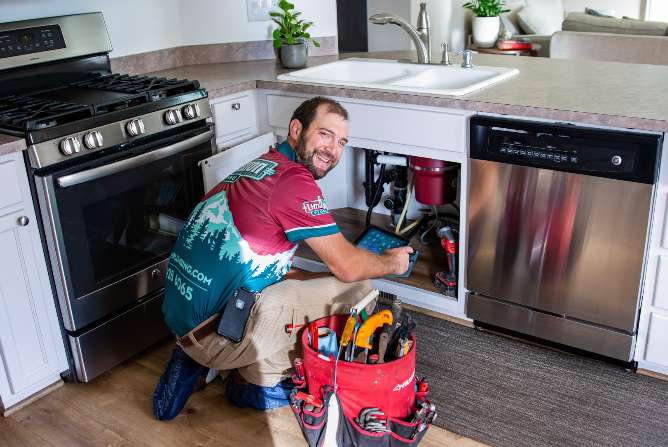Determining When You Should Do It Yourself and When You Should Contact Qualified Plumbing Services
Determining When You Should Do It Yourself and When You Should Contact Qualified Plumbing Services
Blog Article
In this article underneath you will find additional extremely good expertise when it comes to When to call a professional plumber vs. DIY.

Introduction
Pipes problems can range from small aggravations to significant frustrations, often motivating homeowners to choose in between taking on the problem themselves or employing a specialist plumber. Recognizing when to DIY and when to look for professional assistance can conserve time, cash, and protect against prospective calamities. This post discovers the factors to consider when making this essential choice.
Advantages of Do It Yourself Pipes
Taking on plumbing jobs on your own can be fulfilling in numerous ways, particularly for simpler jobs.
Intricacy of Tasks
Some pipes issues need specialized understanding and devices past typical home owner capacities. Messing up intricate issues can lead to additional damages and expensive repair services.
Safety Issues
Working with pipes systems includes dangers such as direct exposure to water damages, capacity for electric risks, and managing tools incorrectly. Safety safety measures should be observed to avoid mishaps and make sure effective fixings.
Indicators to Call an Expert Plumber
Identifying when a pipes concern exceeds DIY capabilities is vital to avoid aggravating issues.
Indications of Facility Issues
Examples consist of:
Motivate professional intervention is necessary to address these issues properly and lessen damage.
Do It Yourself Plumbing Tips
For successful DIY pipes, it's vital to be prepared with the right devices and follow appropriate procedures.
Fundamental Tools and Materials
Key tools for DIY pipes:
Step-by-Step Guides
Clear instructions guarantee risk-free and reliable do it yourself repairs:
Choosing the Right Time to Do It Yourself
Establishing when to tackle plumbing jobs on your own calls for assessing both the complexity of the issue and individual convenience levels.
Evaluation Checklist
Take into consideration:
Expense Savings
Do it yourself pipes jobs frequently conserve money by preventing specialist service charge. Jobs like fixing small leakages, changing faucets, or installing new showerheads are examples where property owners can deal with repair services without hiring a plumbing.
Ability Improvement
Taking part in DIY pipes supplies a chance to find out and enhance sensible skills. Fundamental jobs encourage home owners to recognize their plumbing systems much better and acquire self-confidence in handling tiny repair work independently.
Threats of DIY Pipes
While DIY tasks provide advantages, specific threats must be meticulously taken into consideration prior to trying repair services.
When to Definitely Call a Professional
Certain scenarios require prompt professional interest to stop substantial damages or security dangers.
Emergency Scenarios
Instances include:
Finding and Hiring a Specialist Plumbing Professional
Selecting a certified plumbing guarantees reputable solution and satisfaction in dealing with plumbing concerns.
Standards for Option
Variables to take into consideration:
Cost Evaluation: do it yourself vs. Professional Providers
Comparing the monetary effects of do it yourself initiatives versus professional pipes services helps in making educated decisions.
Financial Considerations
Review:
Conclusion
Making a decision whether to do it yourself or call a professional plumbing technician rests on recognizing the intricacy of pipes problems and personal abilities. By evaluating the benefits and risks, property owners can make educated options that promote efficient upkeep and protect their homes from plumbing disasters.
DIY Plumbing Projects: What Homeowners Can Do and When to Call a Professional
Welcome to our comprehensive guide on DIY plumbing projects. In this blog post, we aim to empower homeowners with the knowledge and skills to tackle basic plumbing tasks around the house. From unclogging drains to fixing a leaky faucet, we’ll walk you through step-by-step instructions on how to handle these common issues.
However, not all plumbing problems can or should be solved with a DIY approach. Recognizing when a problem is beyond your skill level and requires professional intervention is just as important as knowing how to perform basic tasks. We’ll also discuss the signs that indicate it’s time to put down your tools and pick up the phone to call a professional plumber. By understanding when to DIY and when to call a professional, you can save time, avoid potential disasters, and ensure your home’s plumbing system remains in top shape.
Understanding Plumbing Basics
Before we dive into the DIY projects, let’s take a moment to understand the basics of your home’s plumbing system. A typical residential plumbing system consists of two major components: the water supply system, which brings fresh water into your home, and the drainage system, which removes waste water. These systems are made up of a network of pipes, valves, and fixtures that work together to deliver clean water and dispose of waste efficiently.
Regular maintenance of your plumbing system is crucial to prevent minor issues from escalating into major problems. This includes tasks like checking for leaks, removing minor clogs, and ensuring your pipes are insulated for winter. By performing these tasks regularly, you can extend the lifespan of your plumbing system, save money on water bills, and maintain the comfort and hygiene of your home.
In the following sections, we’ll explore some common DIY plumbing projects that homeowners can handle, as well as situations that require the expertise of a professional plumber. Whether you’re a seasoned DIY enthusiast or a beginner, this guide will provide you with valuable insights into the world of home plumbing.
DIY Plumbing Projects Homeowners Can Handle
Plumbing may seem intimidating, but there are several tasks that homeowners can confidently tackle with a little guidance and the right tools. Here are a few common issues you might encounter and how to address them.
Unclogging Drains
Use a Plunger: This is your first line of defense. A good old-fashioned plunger can dislodge the obstruction and clear the drain in many cases. Try a Plumber’s Snake or Hand Auger: If the plunger doesn’t work, a plumber’s snake or hand auger can reach deeper into the pipe to break up the clog. Use a Drain Cleaner: If physical methods fail, a chemical drain cleaner can dissolve the clog. However, use these products sparingly as they can damage your pipes if overused.

I am very involved in and I am assuming you liked our blog entry. You should take the time to promote this entry if you appreciated it. Many thanks for taking the time to read it.
Instant Quote Report this page